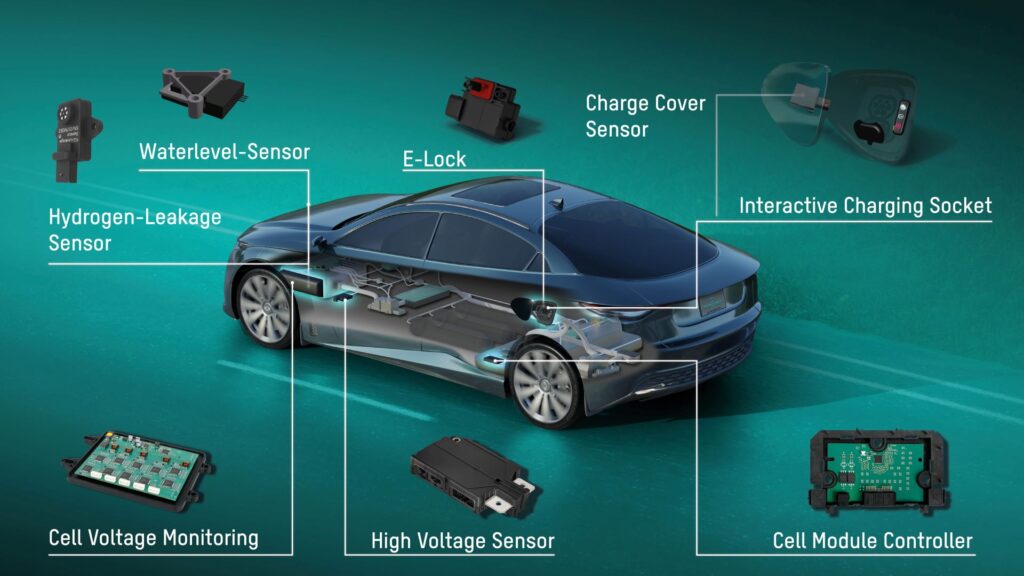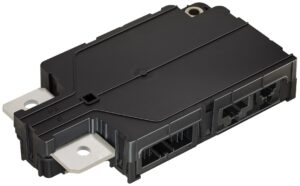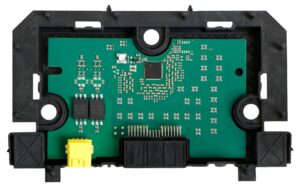
Marquardt sensors and controllers.
The future of electromobility and energy efficiency is being shaped by companies such as Marquardt, a leader in battery management, fuel cell control systems and interactive charging solutions.
To support this transition, Marquardt has developed components for hydrogen fuel cells as well as electric battery cells.
Automotive Industries (AI) asked Ellen Marquardt, Product Manager Power and Energy Solutions at Marquardt, to share the company’s global footprint and in-house capabilities.
Marquardt: The company has a presence in 22 locations across four continents. Our sites are strategically placed

in key markets such as Germany, the USA, Mexico, China, India, Romania, and North Macedonia. Each is tailored to meet regional needs and is specialized in various aspects of our operations — from production to development.
To strengthen our position in the rapidly growing e-mobility market, we’ve established a dedicated business unit called Power and Energy Solutions. This unit reflects our commitment to leading in the electric mobility sector, where the demand for innovative and reliable solutions is surging.
As for our in-house capabilities, we pride ourselves on our comprehensive manufacturing depth. We manage the entire production chain in-house, which includes everything from plastic molding to the precise assembly of electronic components.
Our production lines are highly automated, and they are not just utilized by us but are also planned and produced by our own subsidiary MARQ4Automation. This level of vertical integration allows us to maintain exceptional quality control and operational efficiency.
In addition to our manufacturing strengths, we develop our software, hardware, and mechanical systems internally. This ensures that all critical components are seamlessly integrated, enabling us to deliver highly customized and complete solutions that meet the specific needs of our customers.
Moreover, innovation is at the heart of what we do. We reinvest about 10% of our annual revenue back into research and development. This commitment fuels our advancements in key areas like battery management systems and fuel cell control systems, which are essential for both automotive and industrial applications.
AI: What battery and fuel cell systems solutions did you present at the Battery Show Europe 2024?
Marquardt: We showcased a variety of solutions that underline Marquardt’s strong position in both battery and fuel cell technologies.
In the realm of battery management systems, one of our key highlights was our production-ready high-voltage (HV) sensor. This sensor is particularly innovative as it measures current, voltage and isolation resistance with exceptional accuracy. In the event of an overcurrent or crash, it can also trigger the pyro fuse in the system.
We also introduced our Cell Module Controller (CMC), which provides comprehensive monitoring and control of battery cells, applicable to both electric vehicles and stationary energy systems. This ensures that our battery management systems are not only secure but also optimized for performance. On our Road Map there is also a wireless variant.
When it comes to fuel cell systems, we presented several advanced solutions.
A major focus was on our (CVM) and Cell Voltage Pick-Up (CVP). These systems are designed for direct measurement of cell values in hydrogen fuel cells, providing critical data to ensure the optimal functioning of fuel cells. Additionally, we unveiled new sensors, including the H2 Leakage Sensor, which detects hydrogen concentrations with high precision, significantly enhancing the safety of hydrogen storage and fuel cell operations.
We also introduced a new water level sensor that offers contactless level measurement, crucial for applications such as monitoring wastewater tanks in fuel cell vehicles.
A major highlight on the charging front was our new Illuminated User Interface (IUI) for EV charging. This solution simplifies the charging process with touch-activated controls, an illuminated charging indication light, and a socket searchlight.
The system integrates Marquardt’s patented S3 sensor technology, allowing users to manage functions like charge stop or cover close with a single touch, ensuring a seamless and intuitive experience for EV drivers.
The IUI is compatible with multiple global inlet standards, further enhancing its versatility for electric vehicles in various markets. It is also suitable for robotic charging.
AI: What does Marquardt’s high voltage sensor offer with regard to safety?
Marquardt: Our HV Sensor is designed to address the critical safety requirements of high-voltage battery systems in electric vehicles. Safety is a core aspect of our sensor, which is built to meet the highest automotive safety standards, including ASIL-D for the shunt based current measurement function.

Our High Voltage Sensor offers several key safety features:
Shunt-Based High Current Measurement: The sensor utilizes a robust shunt-based design for highly accurate current measurement. This ensures that any deviations in current, which could indicate potential safety issues, are quickly identified and addressed.
Voltage Measurement: The sensor supports precise voltage measurements across multiple channels, up to eight, with an accuracy level compliant with ASIL-B standards. This capability ensures that the system continuously monitors voltage levels throughout the battery pack, helping to prevent conditions that could lead to thermal runaway or other hazardous situations.
Pyro Switch Ignition: In the event of a crash or critical fault, the sensor triggers a pyro fuse, which disconnects the battery from the vehicle’s electrical system. This is an essential safety feature that prevents electrical hazards and ensures passenger safety during an accident.
Isolation Resistance Measurement: The sensor also measures the insulation resistance between the battery and its connected components, a vital function to ensure that no high voltage leaks into areas where it could pose a risk to
passengers or other vehicle systems.
AI: Does the High Voltage Sensor design allow for flexible customization to meet individual requirements? Is it scalable?
Marquardt: Yes, the High Voltage Sensor is highly flexible and scalable, making it well-suited to meet a wide range of customer-specific requirements.
One of the key aspects of this flexibility is the ability to individually combine the four main functions to match specific application needs: The current measurement, voltage measurement, isolation resistance measurement and triggering of a pyro fuse.
These four functions can be individually selected and combined according to the specific requirements of the application. This modular approach allows customers to create a customized solution that precisely matches their needs, whether they require just one function or a combination of all four.
Furthermore, the sensor’s scalable design means it can be integrated into various system sizes and complexities, from small EV battery packs to larger industrial applications. This flexibility, combined with its modular design, ensures that the High Voltage Sensor can adapt to evolving technological and safety requirements, making it a future-proof solution for our customers
AI: How does your Cell Module Controller (CMC) optimize battery power and protect against failures?
Marquardt: It is designed to optimize battery power by closely monitoring and controlling individual cells within high-voltage batteries. It addresses critical issues like cell imbalances, overcharging, and overheating, ensuring the battery operates safely and efficiently.
The CMC supports ASIL-D safety standards, making it a robust solution for preventing failures.

AI: Is it scalable and easy to integrate?
Marquardt: The CMC is extremely flexible. It can be integrated with various battery chemistries and configurations and is available with or without housing and can be paired with or without a Cell Contacting System (CCS).
This modularity makes it highly scalable and easy to adapt to different applications and system designs. Moreover, our platform is based on two Analog Front Ends ensuring the communication to the subordinated control unit in the system.
AI: How strong is Marquardt’s commitment to advancing battery management and fuel cell control systems, and what is next for the company?
Marquardt: The company is deeply committed to advancing battery management and fuel cell control systems.
Marquardt’s plans include expanding our portfolio with new technologies such as wireless cell monitoring, robotic charging solutions, and advanced safety sensors for hydrogen and battery applications. These efforts demonstrate Marquardt’s dedication to shaping the future of electromobility and energy efficiency.













More Stories
Some Ways How Motorists End Up in Collisions at U-Turns
Maximise Margins with Proven PPF Tactics
Finding the Car Boot Release Button – Tips and Tricks